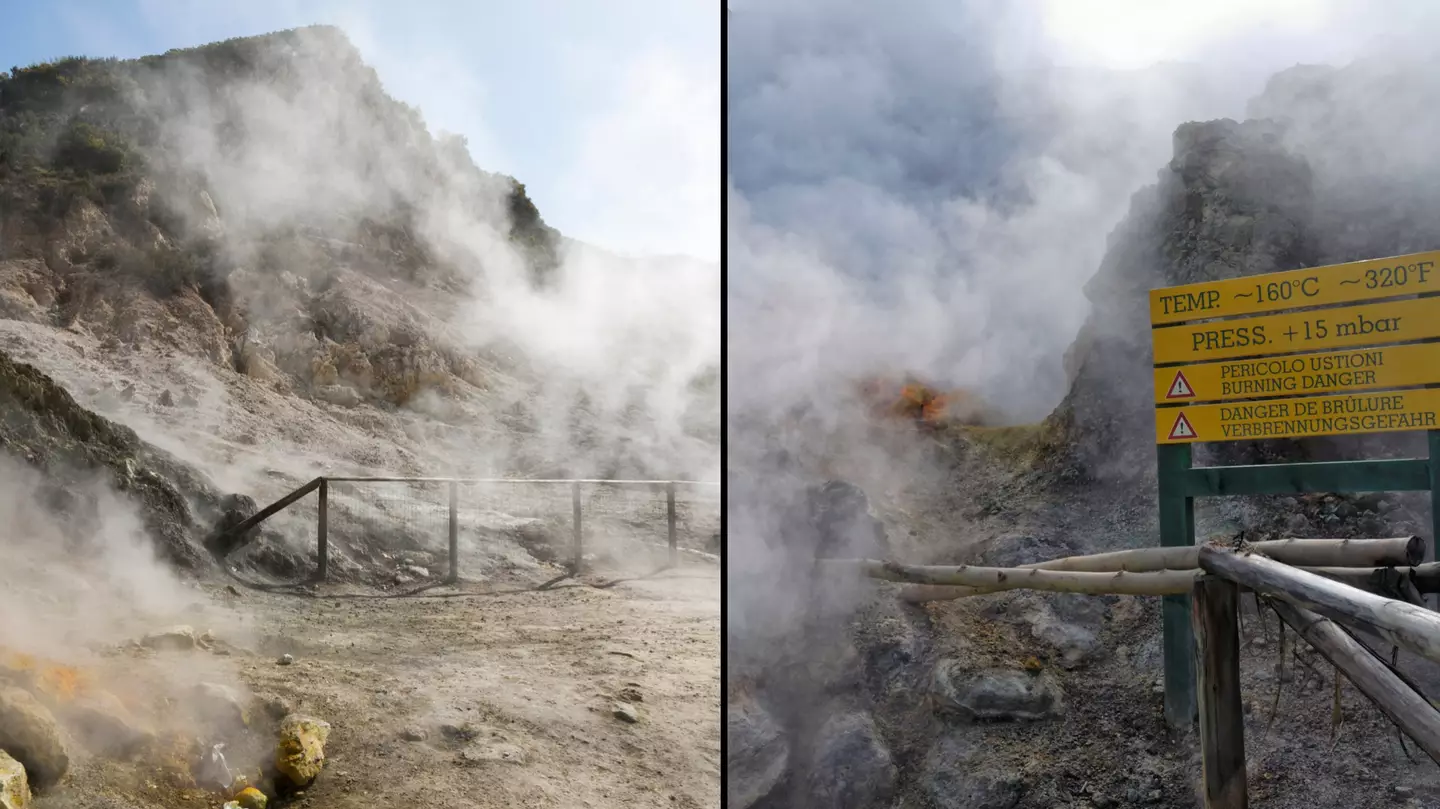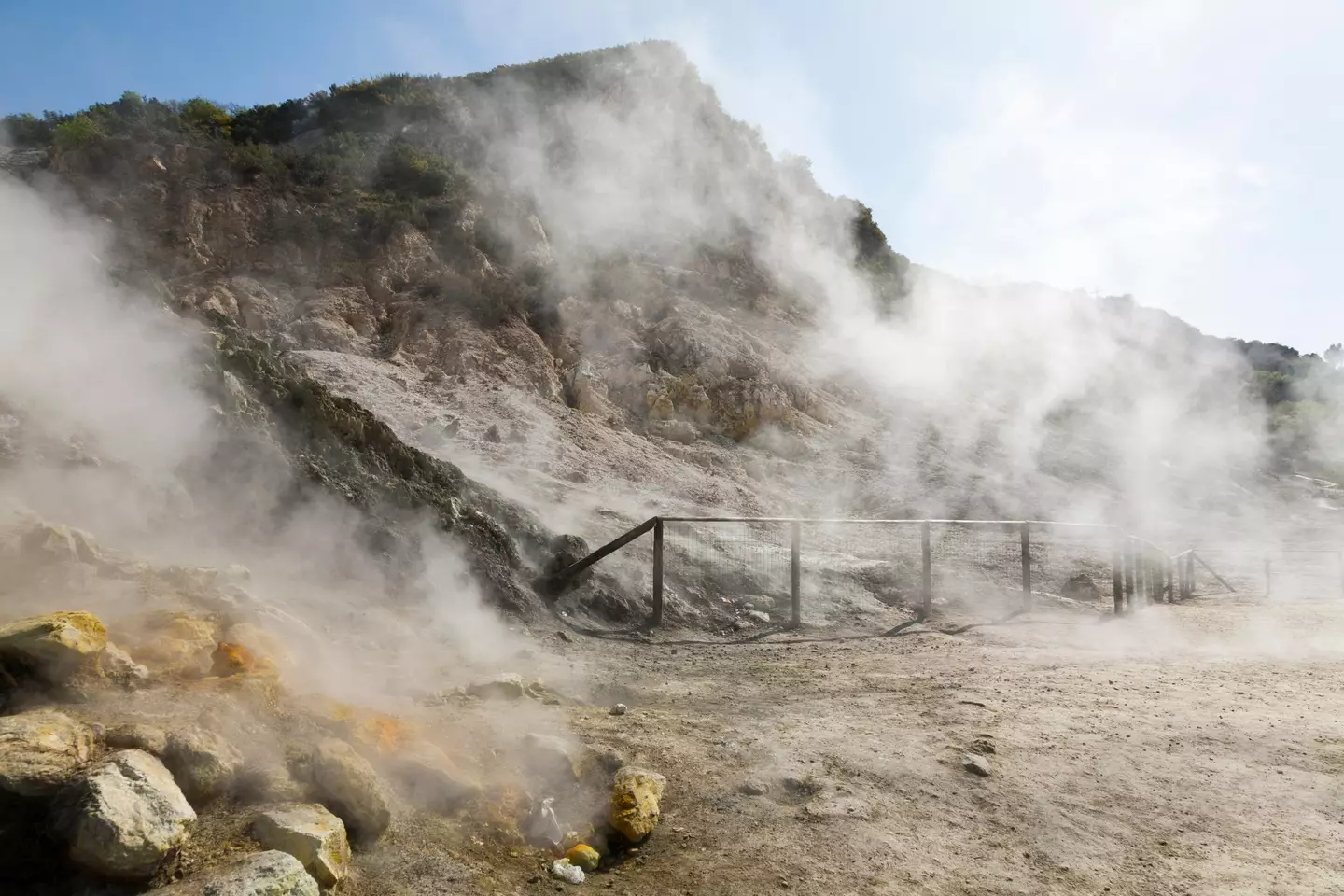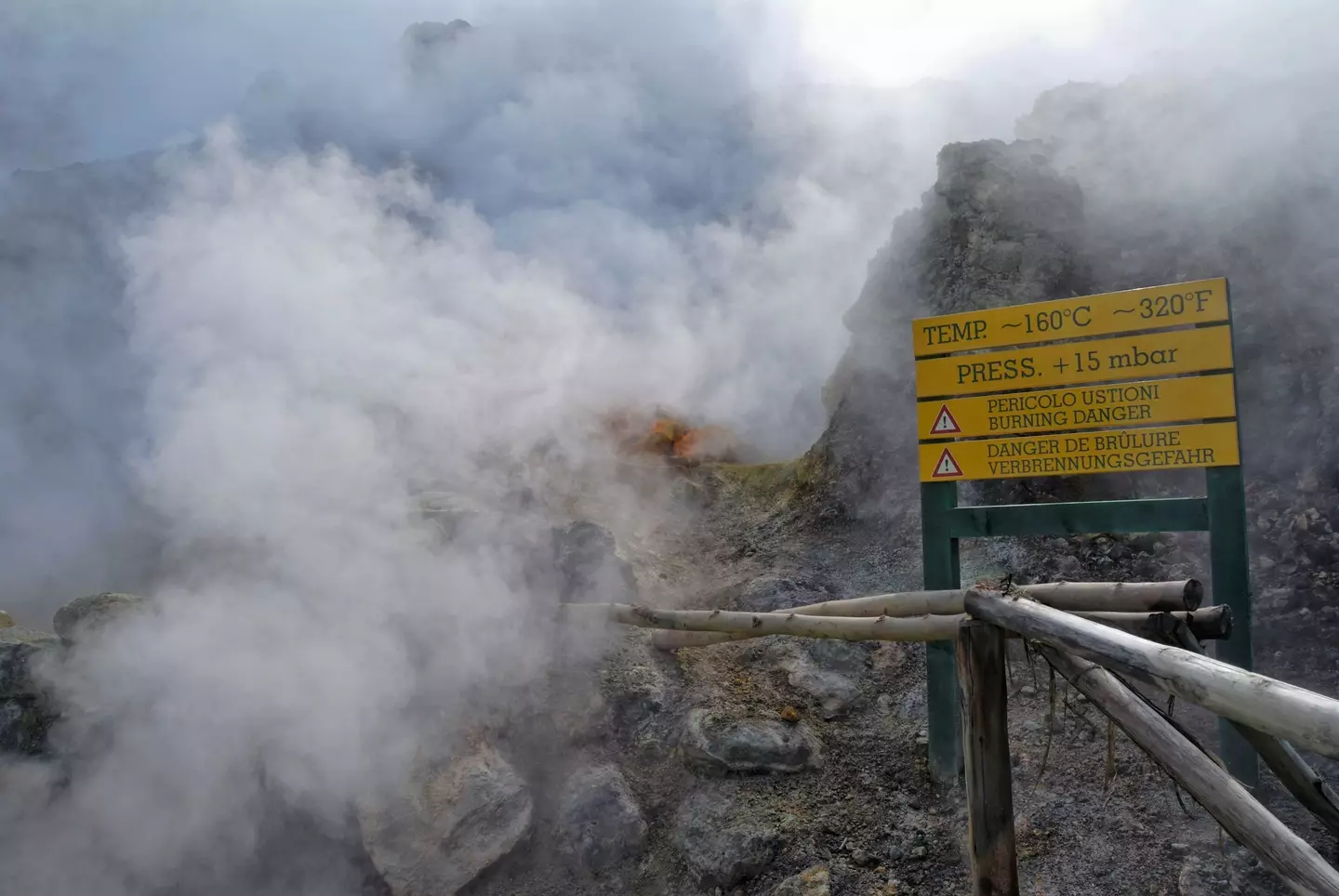
While there are many volcanoes in the UK, they are not something we particularly have to worry about when it comes to eruptions.
Yes, the likes of Arthur's Seat, Snowdonia and Castle Rock are known across the world, but they are very much dormant volcanoes.
However, a volcano not so far away in Europe is said to be 'on the brink' of erupting again, despite the fact it hasn't done so since 1538.
Campi Flegrei is situated near Naples in the south of Italy, in what is described as a broad region of super volcanic calderas - a depression that forms after a volcano erupts and collapses.
Advert
A recent study carried out by experts at Italy’s National Institute of Geophysics and Volcanology (INGV) and University College London (UCL) has found that the crust the volcano is said to be weakening, meaning it is more prone to rupturing which, as a result, makes an 'eruption more likely'.

If it does erupt in a similar fashion to its previous 16th century eruption, then molten rock and gases would be launched high into the stratosphere, causing a worryingly 100-feet high tsunami in the process.
The spread of sulfur and toxic ash would also happen, which could kill wildlife and crops in its wake.
So, you are probably thinking why scientists are worried about a volcano that hasn't erupted in nearly 5,000 years.
Advert
Well, in April alone, more than 600 earthquakes were recorded in the area - causing leading scientists and officials to draft up evacuation plans for residents close to the volcano.
The plan, which involves half a million people, would see residents be moved away within three days - either by their own choice of transport, buses, trains or boats.
The recent study is certainly worrying for the residents of Pozzuol, though the risk level is currently at yellow - two levels from the highest.

Lead author of the study Professor Christopher Kilburn said: "Our new study confirms that Campi Flegrei is moving closer to rupture."
Advert
While there may be an evacuation plan in place, Mauro Antonio Di Vito, director of Vesuvius Observatory, said that despite an evacuation plan being in place, the risk is higher as officials would struggle to evacuate people through the narrow streets of Pozzuoli.
"These areas have been urbanised without considering the fragility," he said. "Buildings need to be better structured and we need a cultural change to really encourage people to do this."
But while there are concerns, scientists are cautiously optimistic a huge scale eruption isn't inevitable.
Topics: Science, News, World News